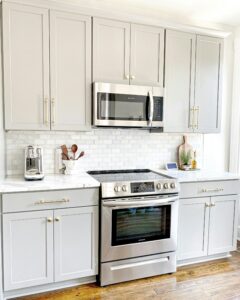A refrigerator is an essential appliance in any household, as it keeps our food fresh and prevents spoilage. However, there may come a time when you go to open your refrigerator and find that it’s not starting. This can be a frustrating and inconvenient problem to deal with, but it’s important to address it promptly to prevent further issues.
When a refrigerator fails to start, it means that it is not receiving power or that there is a problem with one of its components. Ignoring this issue can lead to food spoilage and waste, as well as potential damage to the refrigerator itself. Therefore, it’s crucial to take action as soon as you notice that your refrigerator is not starting.
Key Takeaways
- A refrigerator not starting can be caused by a variety of issues.
- Common causes of refrigerator failure include power source problems, thermostat issues, and compressor or fan motor malfunctions.
- Checking the power source is the first step in troubleshooting a refrigerator that won’t start.
- Inspecting the thermostat and testing the start capacitor are also important steps in diagnosing the problem.
- If all else fails, it may be necessary to call a professional technician to repair or replace the faulty component.
Common Causes of Refrigerator Failure
There are several common reasons why a refrigerator may fail to start. One of the most common causes is a problem with the power source. This could be due to a tripped circuit breaker or a blown fuse. Another common cause is a malfunctioning thermostat, which regulates the temperature inside the refrigerator. If the thermostat is not working properly, it may prevent the refrigerator from starting.
Other potential causes include a faulty start capacitor, which helps the compressor start up, or a malfunctioning compressor itself. The compressor is responsible for circulating refrigerant throughout the system and maintaining the desired temperature. Additionally, a defective defrost timer or a faulty door switch can also prevent the refrigerator from starting.
Checking the Power Source
The first step in troubleshooting a refrigerator that won’t start is to check the power source. Start by ensuring that the refrigerator is plugged in properly and that the outlet is functioning correctly. You can do this by plugging in another appliance or using a voltage tester.
If the outlet is working fine, move on to checking the circuit breaker or fuse box. Look for any tripped breakers or blown fuses and reset or replace them if necessary. It’s also a good idea to check the power cord for any damage or frayed wires.
Inspecting the Thermostat
If the power source is not the issue, the next step is to inspect the thermostat. Start by turning the thermostat to its coldest setting and listen for a clicking sound. If you hear the click, it means that the thermostat is working properly. However, if you don’t hear anything, it may be faulty and need to be replaced.
To further test the thermostat, you can use a multimeter to check for continuity. Disconnect the power to the refrigerator and remove the thermostat from its housing. Set your multimeter to the ohms setting and touch one probe to each terminal on the thermostat. If there is no continuity, it means that the thermostat is defective and needs to be replaced.
Testing the Start Capacitor
If the thermostat is functioning correctly, but your refrigerator still won’t start, it’s time to test the start capacitor. The start capacitor helps provide an extra boost of power to the compressor when it starts up. To test it, you will need a multimeter with a capacitance setting.
Start by disconnecting the power to the refrigerator and locating the start capacitor, which is usually located near the compressor. Remove any covers or panels that may be blocking access to it. Once you have access to the start capacitor, discharge it by shorting out its terminals with an insulated screwdriver.
Next, set your multimeter to its capacitance setting and touch one probe to each terminal on the start capacitor. The multimeter should display a reading within 6% of the capacitor’s rated capacitance. If it does not, it means that the start capacitor is faulty and needs to be replaced.
Examining the Compressor

If both the thermostat and start capacitor are working properly, but your refrigerator still won’t start, it’s time to examine the compressor. The compressor is a vital component of the refrigerator, as it circulates refrigerant and maintains the desired temperature.
To examine the compressor, start by disconnecting the power to the refrigerator and removing any covers or panels that may be blocking access to it. Once you have access to the compressor, visually inspect it for any signs of damage or leaks. Check for any loose or disconnected wires as well.
If you notice any visible damage or leaks, it’s likely that the compressor is faulty and needs to be replaced. However, if there are no visible issues, you can use a multimeter to test the compressor for continuity. Set your multimeter to the ohms setting and touch one probe to each terminal on the compressor. If there is no continuity, it means that the compressor is defective and needs to be replaced.
Assessing the Defrost Timer
If all previous components are functioning properly, but your refrigerator still won’t start, it’s time to assess the defrost timer. The defrost timer controls when the refrigerator goes into defrost mode to prevent ice buildup on the evaporator coils.
To assess the defrost timer, start by disconnecting the power to the refrigerator and locating the defrost timer, which is usually located near the thermostat or behind a cover panel. Once you have access to the defrost timer, use a flathead screwdriver to turn the timer dial clockwise until it clicks into defrost mode.
Wait for about 30 minutes and listen for a clicking sound, which indicates that the defrost timer has advanced out of defrost mode and into cooling mode. If you don’t hear a click, it means that the defrost timer is faulty and needs to be replaced.
Troubleshooting the Door Switch
If your refrigerator still won’t start after checking all previous components, it’s time to troubleshoot the door switch. The door switch is responsible for turning off the light inside the refrigerator when the door is closed.
To troubleshoot the door switch, start by disconnecting the power to the refrigerator and locating the door switch, which is usually located near the top of the door frame. Once you have access to the door switch, use a multimeter to test for continuity.
Set your multimeter to the ohms setting and touch one probe to each terminal on the door switch. If there is no continuity when the door is closed, it means that the door switch is faulty and needs to be replaced.
Replacing the Condenser Fan Motor
If you have gone through all the previous steps and your refrigerator still won’t start, it may be time to replace the condenser fan motor. The condenser fan motor is responsible for cooling the compressor and condenser coils.
Replacing the condenser fan motor can be a complex task, as it involves removing covers and panels, disconnecting wires, and removing mounting brackets. It’s recommended to seek professional help when replacing the condenser fan motor to ensure that it is done correctly.
When to Call a Professional Technician
While troubleshooting and repairing your refrigerator yourself can save you money, there are certain situations where it’s best to call a professional technician. If you are not comfortable working with electrical components or if you are unable to identify the root cause of the problem, it’s best to seek professional help.
Additionally, if you have gone through all the troubleshooting steps outlined in this article and your refrigerator still won’t start, it’s a sign that there may be a more complex issue at hand. A professional technician will have the knowledge and experience to diagnose and repair these types of problems.
In conclusion, a refrigerator not starting can be a frustrating problem to deal with, but it’s important to address it promptly. By following the steps outlined in this article, you can troubleshoot and potentially fix the issue yourself. However, if you are unsure or uncomfortable with any of the steps, it’s best to seek professional help. Remember, addressing the issue promptly can prevent further damage to your refrigerator and save you from potential food spoilage and waste.
If you’re having trouble with your refrigerator not starting, you’ll want to check out this helpful article on 911 Appliance’s blog. They provide a comprehensive guide on diagnosing and finding solutions for this common issue. From troubleshooting tips to step-by-step instructions, this article will help you get your refrigerator up and running again in no time. Don’t let a malfunctioning fridge ruin your day – click here to read the article and get your appliance back in working order.
Are there common troubleshooting steps that apply to both refrigerator and dishwasher issues?
When dealing with diagnosing dishwasher door closure issues, it’s essential to understand that some troubleshooting steps also apply to refrigerator problems. Checking for proper sealing, examining the gasket, and ensuring the door is properly aligned are common steps that can help resolve issues in both appliances.



